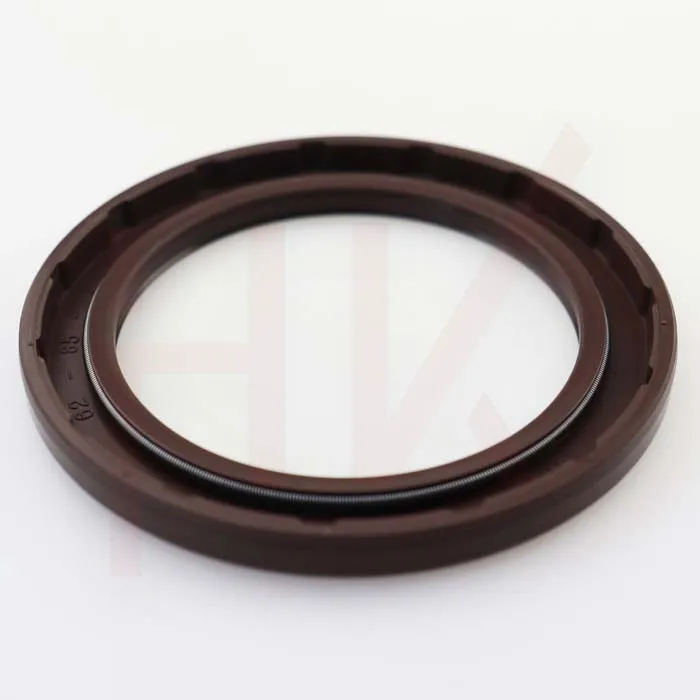Jul . 27, 2024 00:27 Back to list
Exploring the Benefits and Applications of Skeleton Oil Seals in Modern Machinery Systems
Understanding Skeleton Oil Seals Function, Design, and Applications
Skeleton oil seals, an integral component in various mechanical systems, have become essential in ensuring the longevity and efficiency of machinery in several industries. These seals, which serve as barriers to prevent fluid leakage, are pivotal in maintaining optimal performance in engines, gearboxes, and other related systems.
What is a Skeleton Oil Seal?
A skeleton oil seal, also known as a metal casing seal, consists of a flexible elastomeric material, often rubber, molded around a metal skeleton. This design combines the resilience of rubber with the strength of metal, providing robustness and durability. The metal skeleton offers structural integrity, allowing the seal to withstand high-pressure environments while maintaining a tight fit against the rotating shaft.
The Function of Skeleton Oil Seals
The primary function of skeleton oil seals is to prevent the leakage of lubricating oil and other fluids from the machinery they are integrated into. This is crucial because oil leakage not only leads to reduced efficiency and increased wear on components but also poses environmental concerns. Furthermore, these seals aid in keeping contaminants and dust away from vital components, thus ensuring a clean operating environment.
In addition to preventing leaks, skeleton oil seals can also help in regulating pressure within the systems where they are employed
. By maintaining a consistent barrier, these seals contribute to the overall stability and performance of various machinery, particularly in automotive and industrial applications.Design Features
skeleton oil seal

The design of skeleton oil seals is tailored to meet the diverse requirements of different applications. One of the significant aspects is the choice of materials. The elastomeric components can be made from various materials, including nitrile, fluorocarbon, and silicone, depending on the specific operating conditions such as temperature, pressure, and the type of fluids involved.
The size and shape of the oil seal also play critical roles. Skeleton oil seals come in various diameters and thicknesses to accommodate different shaft sizes and space constraints. The design may also include lip configurations that enhance sealing effectiveness and reduce wear. These features ensure that the seals can perform optimally, even in challenging conditions.
Applications of Skeleton Oil Seals
Skeleton oil seals are widely utilized across various sectors, most notably in the automotive industry. They are found in engines, transmissions, and differential assemblies, playing a crucial role in vehicle performance and reliability. Beyond automotive applications, these seals are also prevalent in industrial machinery, hydraulic systems, and aerospace components, where reliability under pressure and rotation is paramount.
The versatility of skeleton oil seals makes them suitable for applications involving rotary shafts, oscillating motion, and even linear motions. Industries such as manufacturing, agriculture, and construction benefit greatly from the reliability and efficiency these seals provide.
Conclusion
Skeleton oil seals are more than just simple components; they are critical to the functionality and longevity of various mechanical systems. Their unique combination of metal and rubber allows them to withstand harsh conditions while effectively preventing leaks and protecting sensitive components from contaminants. As technology advances and machinery strives for greater efficiency, the importance of skeleton oil seals will undoubtedly continue to grow, highlighting their invaluable role in mechanical engineering and industrial applications. Understanding their function, design, and versatility can help businesses and engineers make informed decisions regarding their implementation, leading to enhanced performance and reduced maintenance costs in the long run.
-
Wiper Oil Seal: Our Commitment to Clean Hydraulics
NewsAug.13,2025
-
Hydraulic Oil Seal for Self Discharging Cars
NewsAug.13,2025
-
Hub Oil Seal for Agricultural Tractor Hubs
NewsAug.13,2025
-
Skeleton Oil Seal with NBR Material
NewsAug.13,2025
-
Rotary Lip Seal for High Pressure Applications
NewsAug.13,2025
-
Cylinder Seal Kits Our Legacy of Hydraulic Trust
NewsAug.13,2025
-
Unlocking the Potential of Hydraulic Systems with Essential Sealing Solutions
NewsAug.06,2025
Products categories
















